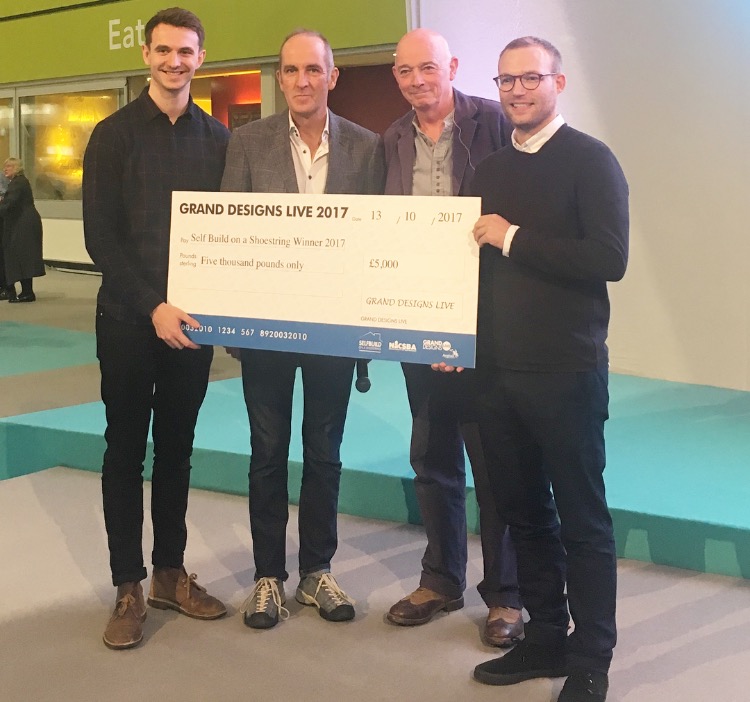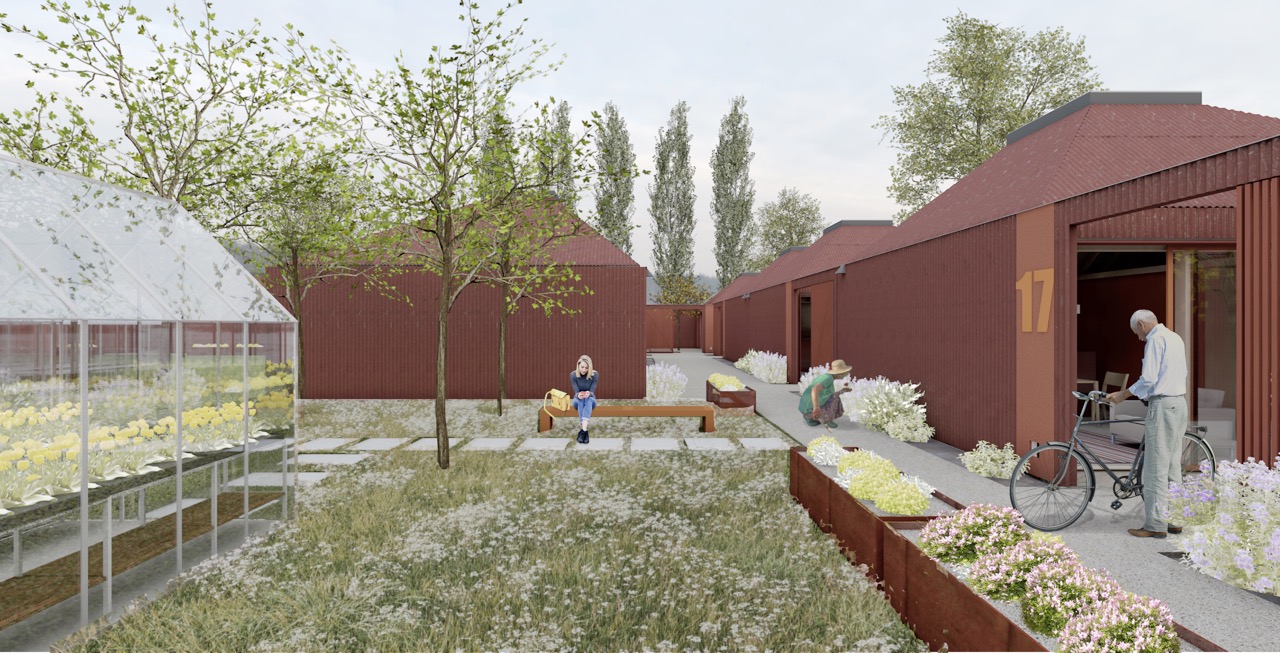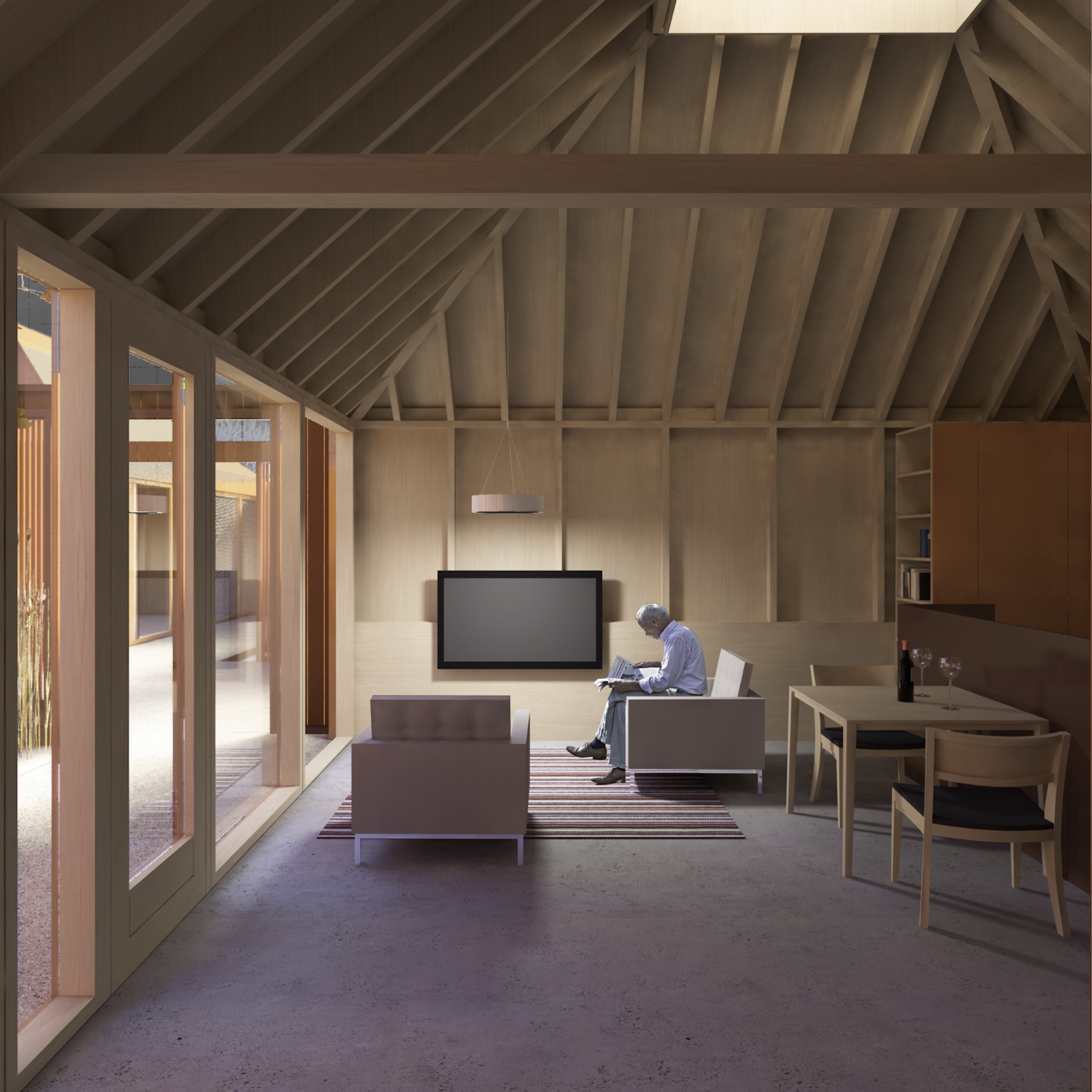Shoestring 2017: Winner annouced
London architecture firm Inglis Badrashi Loddo has won the 2017 ‘Self Build on a Shoestring’ ideas competition, which this year focused on devising compact, low cost homes for older people. The firm was awarded the £5,000 prize by Grand Designs’ presenter Kevin McCloud, at Grand Designs Live, at Birmingham’s NEC.

The winning entry – called ‘The Apple Yard’ – arranged the homes around the perimeter, with communal facilities, allotments, greenhouses and an orchard in the centre. Each open-plan home has a pyramid shaped roof with one wall that is fully glazed, overlooking a small private garden area.cThe standard 42 sq m ‘granny annexe’ would cost just £39,942 to build. The entire retirement community of 30 homes, including all the shared communal facilities is estimated to cost £1,493,000.

This year the brief challenged architects, designers and others to come up with innovative ways of building a simple, customisable ‘granny annexe’. Entrants also had to show how 30 of the homes could be arranged to create an innovative, low-cost mutually-supportive retirement community. The maximum cost for constructing each granny annexe was set at £40,000 and the overall 30-home retirement community had to be built from no more than £1.5m.
The judges included three of the UK’s TV self-build celebrities – Piers Taylor, Charlie Luxton and George Clarke. RIBA self-build champion Luke Tozer is also one of the judges along with architectural writer Hugh Pearman, and Maria Brenton, the driving force behind OWCH – a unique community-led retirement community recently completed in Barnet, North London. The OWCH project was the inspiration for this year’s competition.
The competition attracted entries from across the UK, along with international submissions from Australia, Denmark, Vietnam, China and the USA.

Key features of the winning entry included:
A largely open-plan layout to maximie the useable space. Each ‘granny annexe’ is 7m x 6m. The standard layout has minimal internal walls (just a slim sliding screen between the sleeping and living areas), but it feels very generously proportioned. The tall top-lit pyramidal roof also creates an impression of space. Alternative internal layout options are available too.
Very cost effective pre-fabricated construction. The homes have three very simple, standard external walls – so the design is well suited to mass pre-fabrication. The identical bathroom ‘pods’ would also be built in a factory and then dropped into place. The roof – a stress-skinned pyramid structure – provides a clear span across each home. The fourth wall is largely triple-glazed. Much of the timber ‘structure’ is left exposed internally; this saves money and adds character.
The external appearance of the homes can be adjusted – they can be clad in timber, fibre cement board, rendered or hung with tiles. The cost would reduce further if mass produced – if more than 1,000 of the homes were being built each year, the team from Inglis Badrashi Loddo estimate that each home would cost around £34,350 to build.
The judges said: “The individual homes are logically planned as one-bed flats; the private gardens are a nice touch allowing the option of privacy or communality. The design provides an incredibly cost-effective structure, and the open-plan layout makes excellent use of the space.”
NaCSBA Chair Michael Holmes said: “The ingenious construction system proposed by the winning submission offers incredible value for money, and the range of layout and specification options means the residents can really have a big say in the finish of their homes.”
“In other parts of the world, scores of retirement communities like this are being routinely commissioned by collectives of elderly residents, who want to mutually support each other in their old age, rather than be a burden on their families or the state. Wouldn’t it be great to see the same happening here?”
